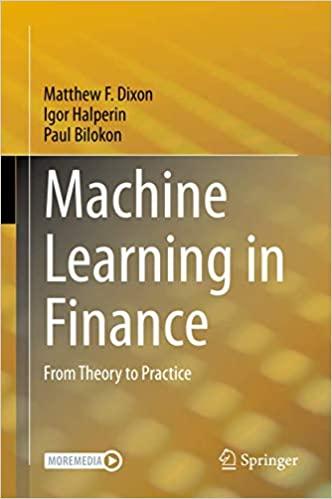Question
You recently went to work for Allied Components Company, a supplier of auto repair parts used in the after-market with products from Daimler AG, Ford,
You recently went to work for Allied Components Company, a supplier of auto repair parts used in the after-market with products from Daimler AG, Ford, Toyota, and other automakers. Your boss, the CFO, has just handed you the estimated cash flows for two proposed projects. Project L involves adding a new item to the firms ignition system line; it would take some time to build up the market for this product, so the cash inflows would increase over time. Project S involves an add-on to an existing line, and its cash flows would decrease over time. Both projects have 3-year lives because Allied is planning to introduce entirely new models after 3 years.
Here are the projects after-tax cash flows (in thousands of dollars):
0 1 2 3
| | | |
Project L -100 10 60 90
Project S -100 70 50 10
Depreciation, salvage values, net operating working capital requirements, and tax effects are all included in these cash flows. The CFO also made subjective risk assessments of each project, and he concluded that both projects have risk characteristics that are similar to the firms average project. Allieds WACC is 10%. You must determine whether one or both of the projects should be accepted.
- Based on IRR, if Project L and Project S are INDEPENDENT, which should be accepted?
- Neither
- Both
- Project L
- Project S
- Based on IRR, if Project L and Project S are MUTUALLY EXCLUSIVE, which should be accepted?
- Neither
- Both
- Project L
- Project S
- Inherent in the NPV calculation is the assumption that cash flows can be reinvested at the projects:
- Cost of Capital
- IRR Rate
- Tax Rate
- Yield to Maturity
- Inherent in the IRR calculation is the assumption that cash flows can be reinvested at the projects:
- Cost of Capital
- IRR Rate
- Tax Rate
- Yield to Maturity
- Both b and d
Step by Step Solution
There are 3 Steps involved in it
Step: 1

Get Instant Access to Expert-Tailored Solutions
See step-by-step solutions with expert insights and AI powered tools for academic success
Step: 2

Step: 3

Ace Your Homework with AI
Get the answers you need in no time with our AI-driven, step-by-step assistance
Get Started


